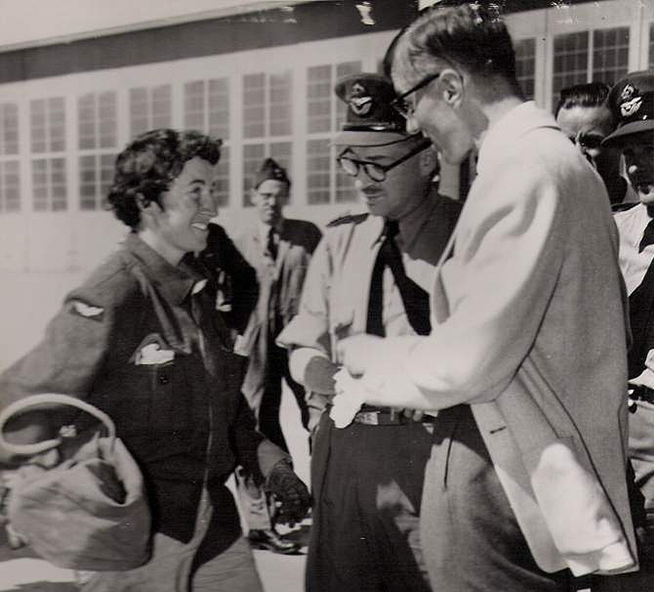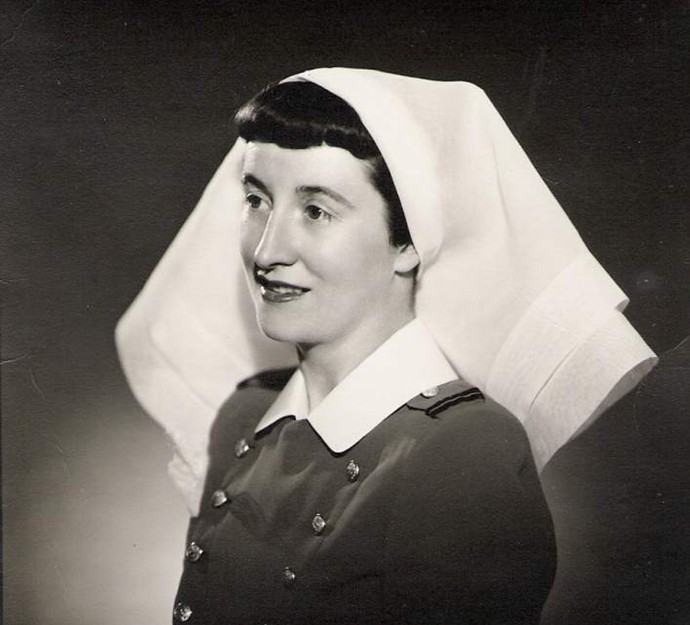Estimated reading time 5 minutes, 50 seconds.
Grace “Gracie” MacEachern (née Gagnon) was a pioneer for women at a revolutionary time for women’s roles and rights. She was a para-belle, a romantic term coined for para rescue nurses in the 1950s in the Canadian Armed Forces. That made her an asset not only in redefining gender roles, but also in what would become modern-day search and rescue (SAR) in Canada.

In the words of her son, Bruce MacEachern, “She really blazed a trail for women and for the Air Force itself.”
She started her career by serving as a nursing sister for the Grey Nuns in the Pembroke, Ont., area. In 1951, following the death of her first husband, Cranston Woodward, she enrolled in the Canadian Armed Forces, where she received a commission as a pilot officer just before joining the para rescue course at the age of 32.
The para rescue course offered in the 1950s was attended by nurses and doctors. At the time, they were the only medical personnel to jump out of airplanes on rescue missions. And they did so on a volunteer basis. The course was the foundation of and, at that time, the only equivalent to, today’s vigorous and demanding search and rescue technician training course. It was only a month long, in contrast to the current one-year training course.
“Either way,” said former search and rescue technician MWO Gavin Lee. “you’ve got to give a ‘hats-off’ to whoever makes it through. It’s tough.”
While the ground-breaking achievements of all the para-belles are worthy of commemoration, MacEachern is especially noteworthy for the fact that she was the first woman to do an operational jump in pararescue. That first jump, one month after she took the para rescue course, was in Mount Coquitlam, B.C., to rescue a geologist.
She ended up landing in a tree and, due to an ill-fitting harness, “she was left dangling by one foot and it took her about two hours to right herself and get down,” said her son. “She used her let-down line, or nylon rope, which was 100 feet (30.4 metres) long; however, it was still 20 feet (6 metres) short. She had dropped her gloves during the time that she was trying to right herself and, on the descent down the line, she got severe rope burns on her hands.”
It was dark by the time MacEachern reached the ground, but she carried her two kit bags, which weighed 60 pounds (27 kilograms) up the mountain. She had to spend the night in the wild as she could no longer see anything. She caught up to the other rescuers in the morning, and the geologist that they were rescuing was saved in the end.

The equipment the para-belles used was crude: the helmets had cages (much like hockey masks), the boots were similar to those worn by Boy Scouts, the harnesses did not fit the smaller frames of the women, and “the parachutes were basically enough to get you to the ground,” said Lee.
“[The parachutes] weren’t the big competition chutes that we have now, that get you safer in tighter places,” he added. “You were going to get to the ground quite hard. It was antiquated equipment at the time, and in these times no one would jump in that stuff.”
MacEachern eventually had to have several surgeries as a result of numerous jumps, including three knee replacements and a spinal fusion.
She left the Forces in 1955 for a mission of a different kind. She was going to remarry and, at the time, women could not be married and be nurses, so she pursued a career in the public health sector.
In 1965, she moved to Trenton, Ont. She retired from public health in the 1970s, but she and her husband continued to visit veterans and the elderly in homes from Kingston to Brighton, in Ontario.
“She was really a caring individual, very determined, bordering on stubborn, and she really had an adventure side to her,” MacEachern’s husband said. “Nursing came first. She was determined to go and do some trailblazing.”
MacEachern passed away on Feb. 17, 2010, seven months shy of her 90th birthday.
At her funeral, six SAR techs in their orange jump suits were her pallbearers, and 424 Transport and Rescue Squadron from 8 Wing Trenton lined up to pay homage. She was well respected in the SAR community, and affectionately known as “Gracie” to many.
Lee attended her funeral in Trenton, where he overheard people say that “she would be so proud” of having SAR techs in jump suits carry her.
“And we were as proud of her,” he said. “She is part of an elite unit in the world. She was an explorer, a pioneer.”








